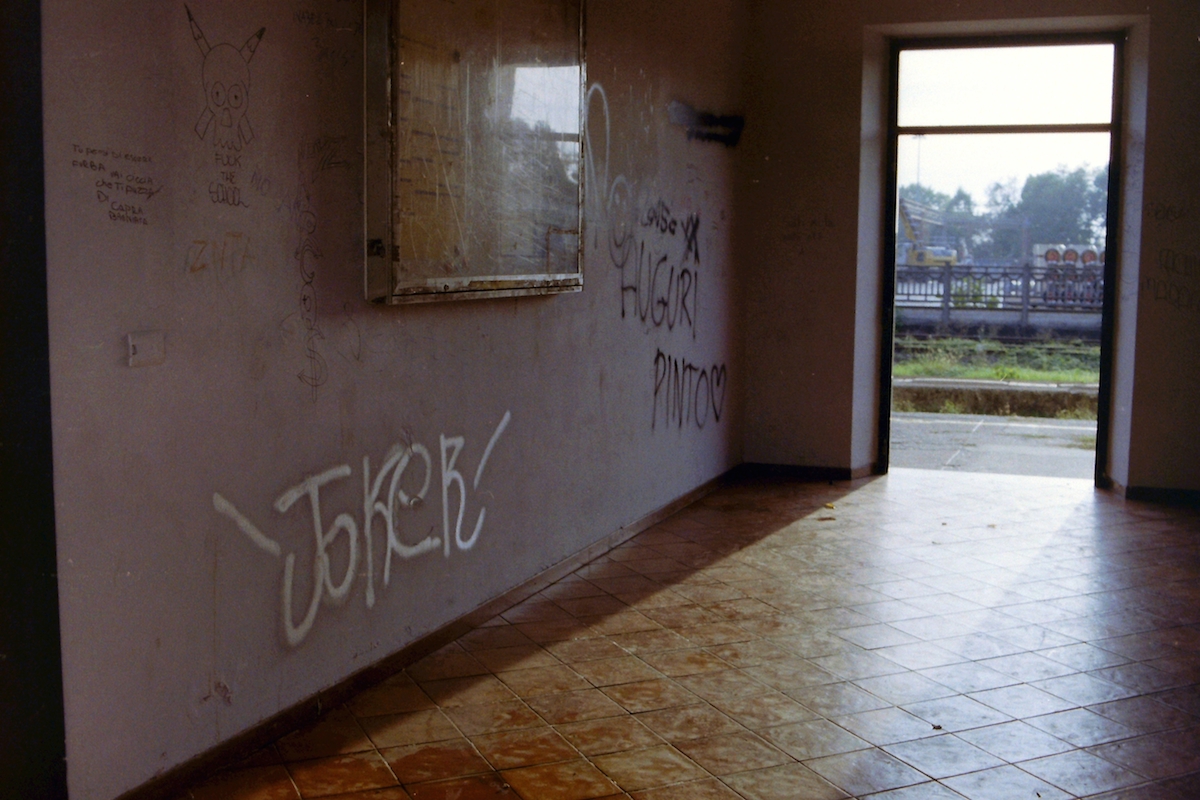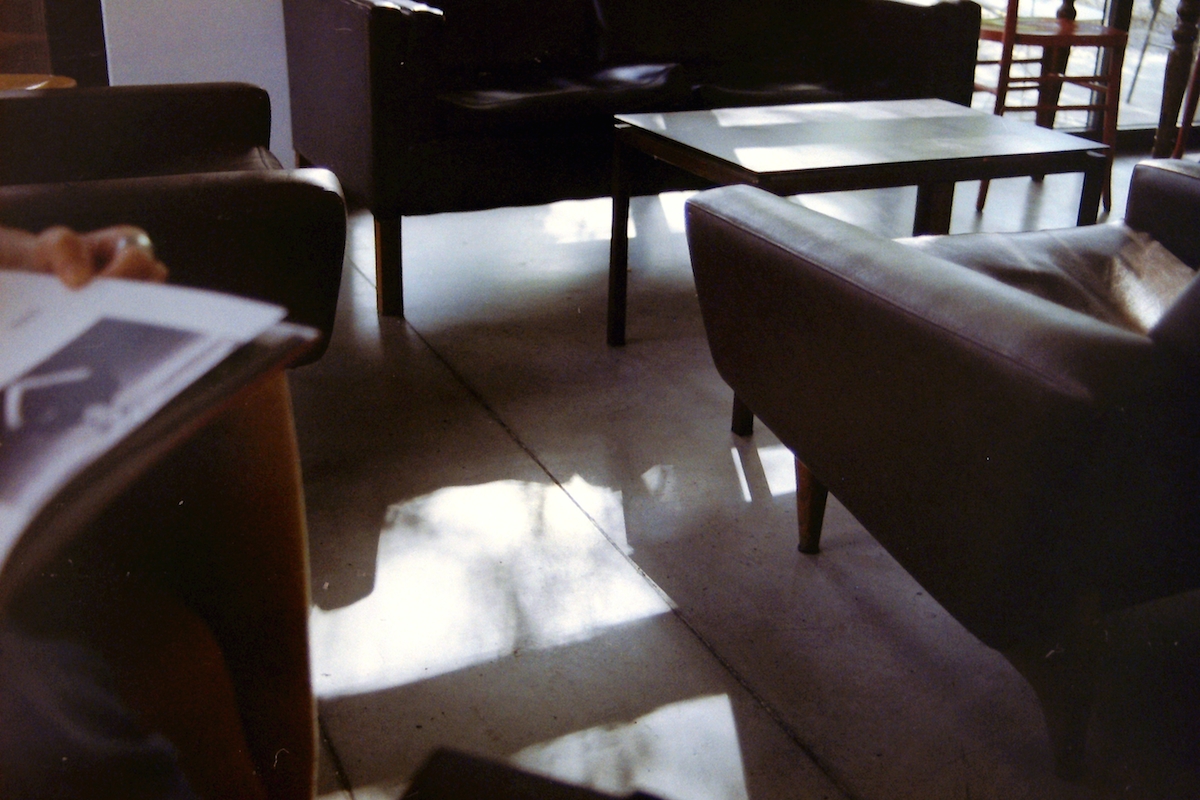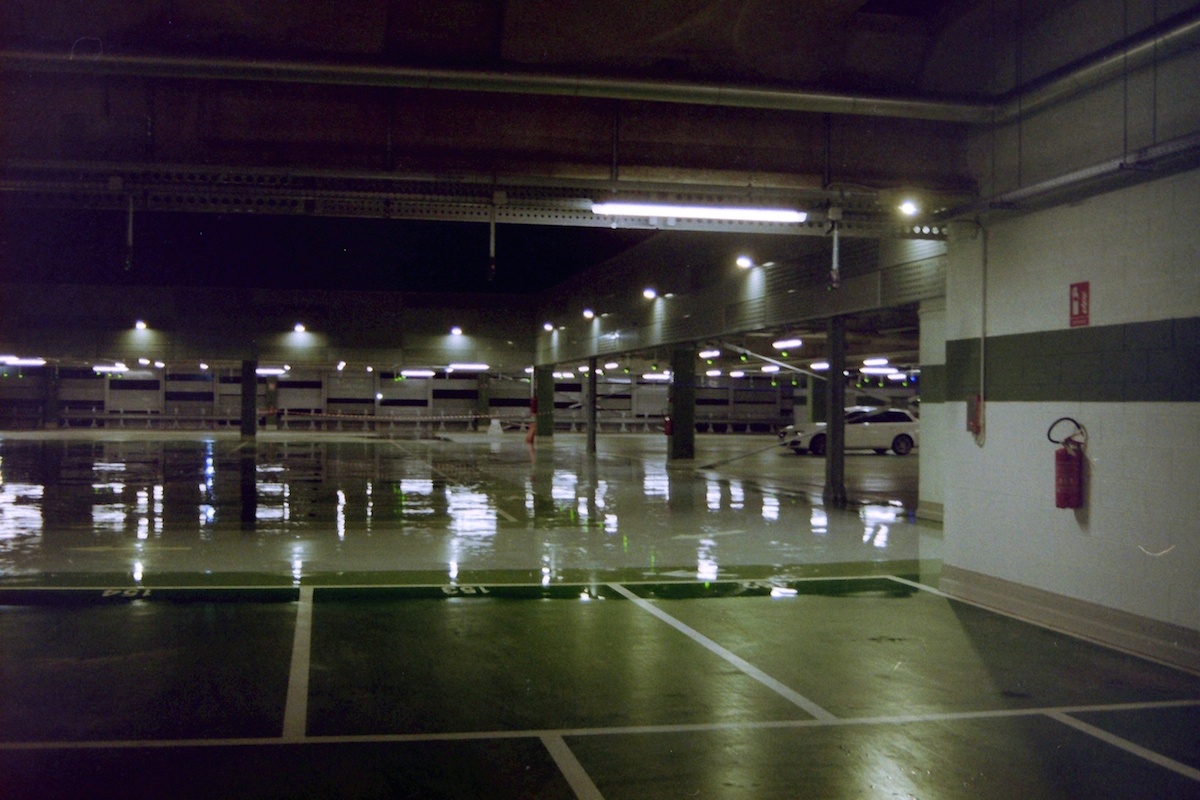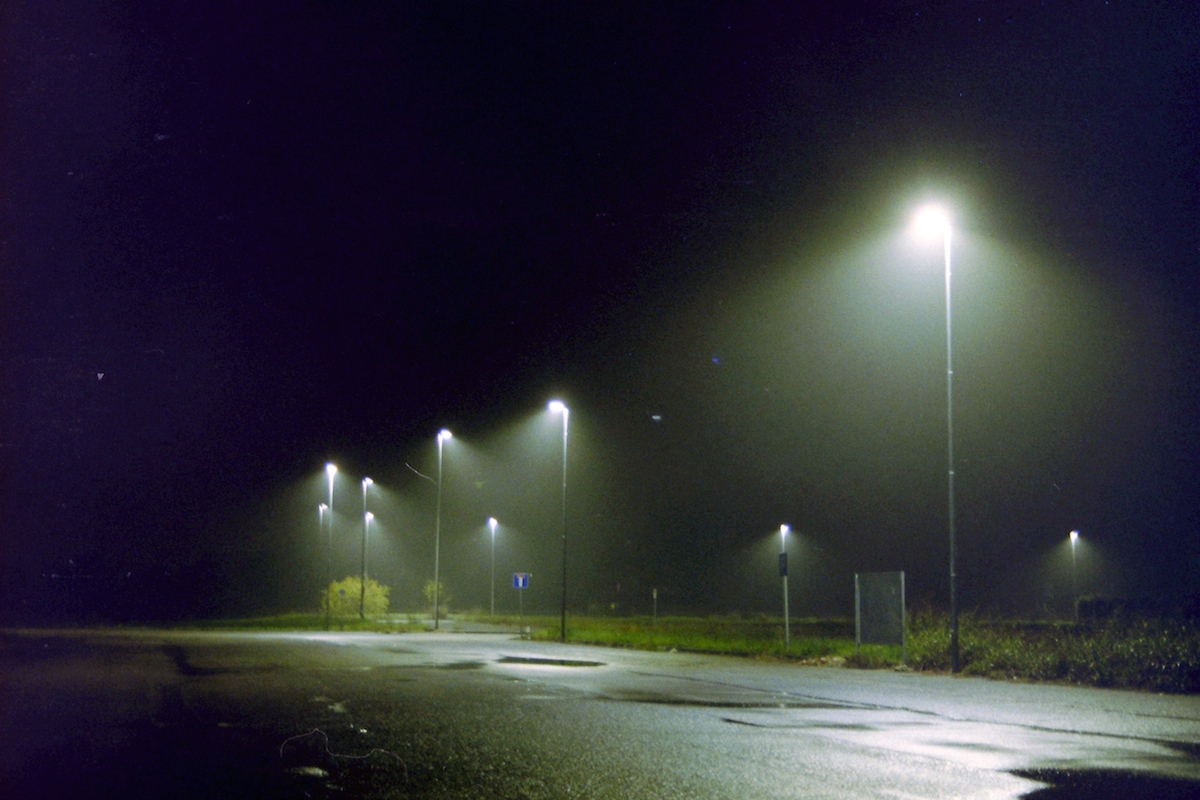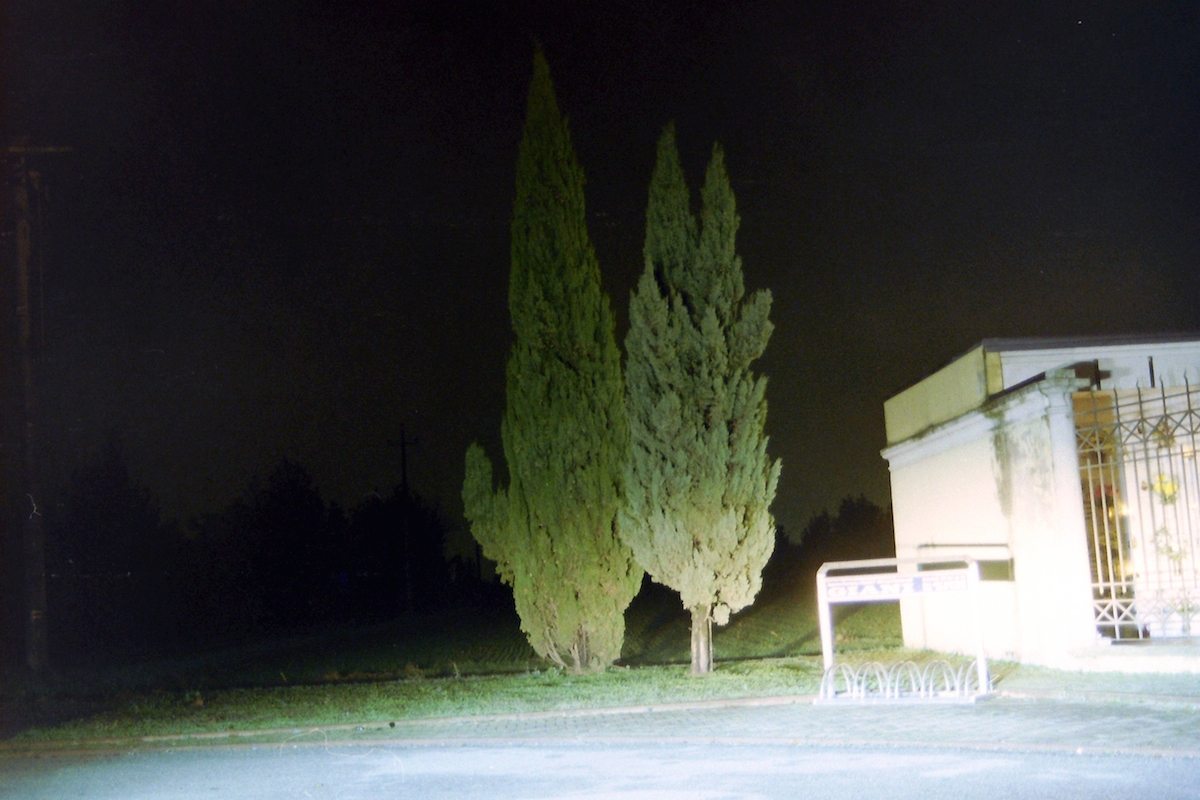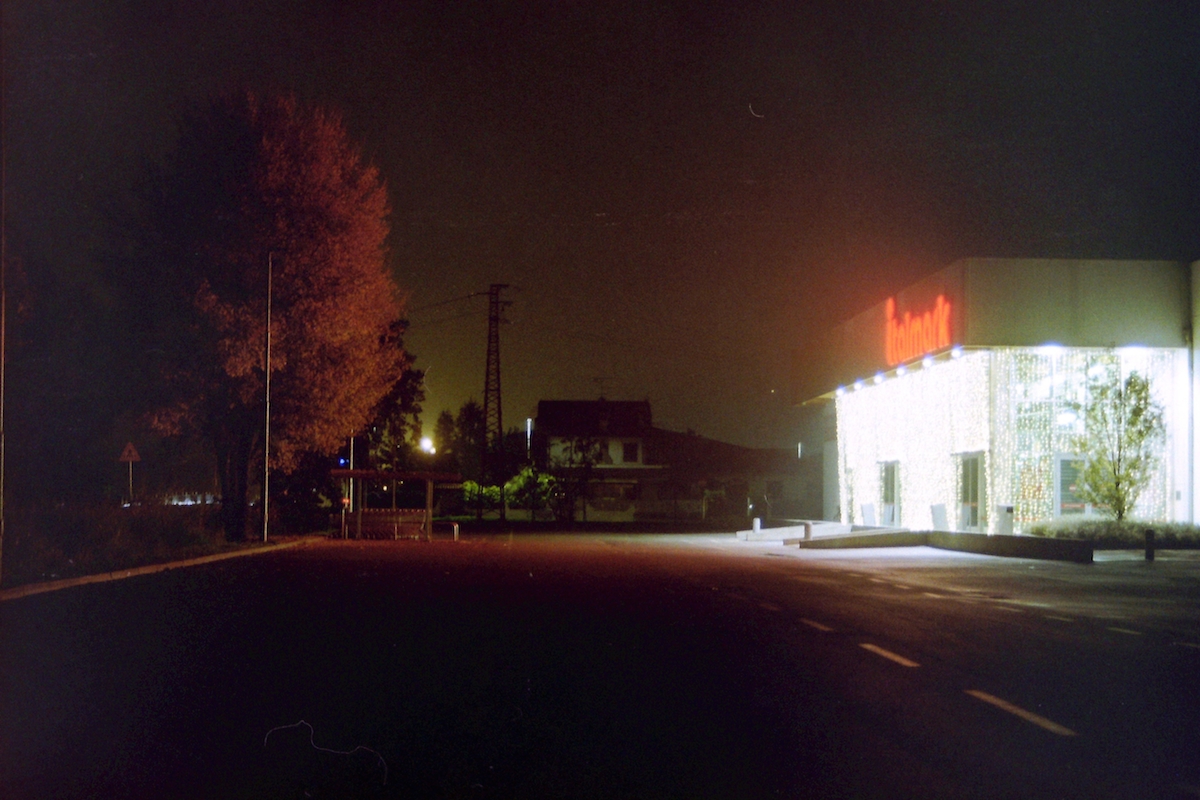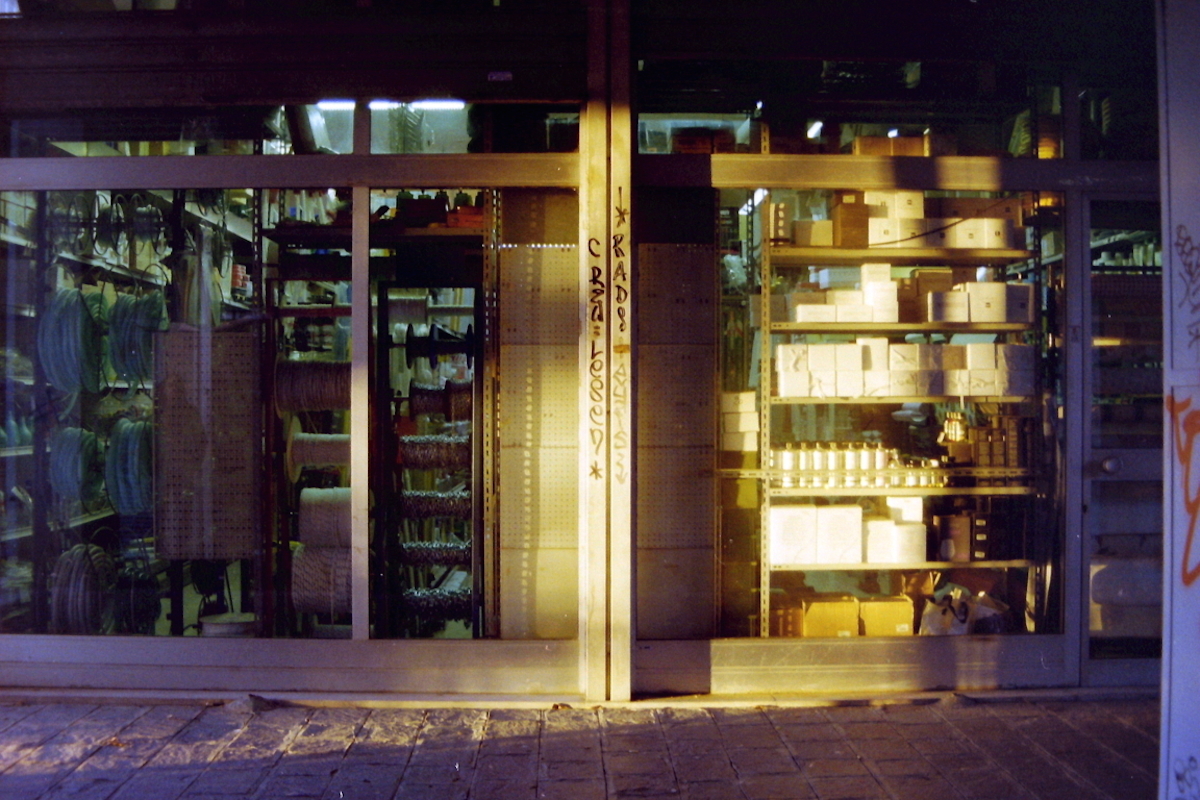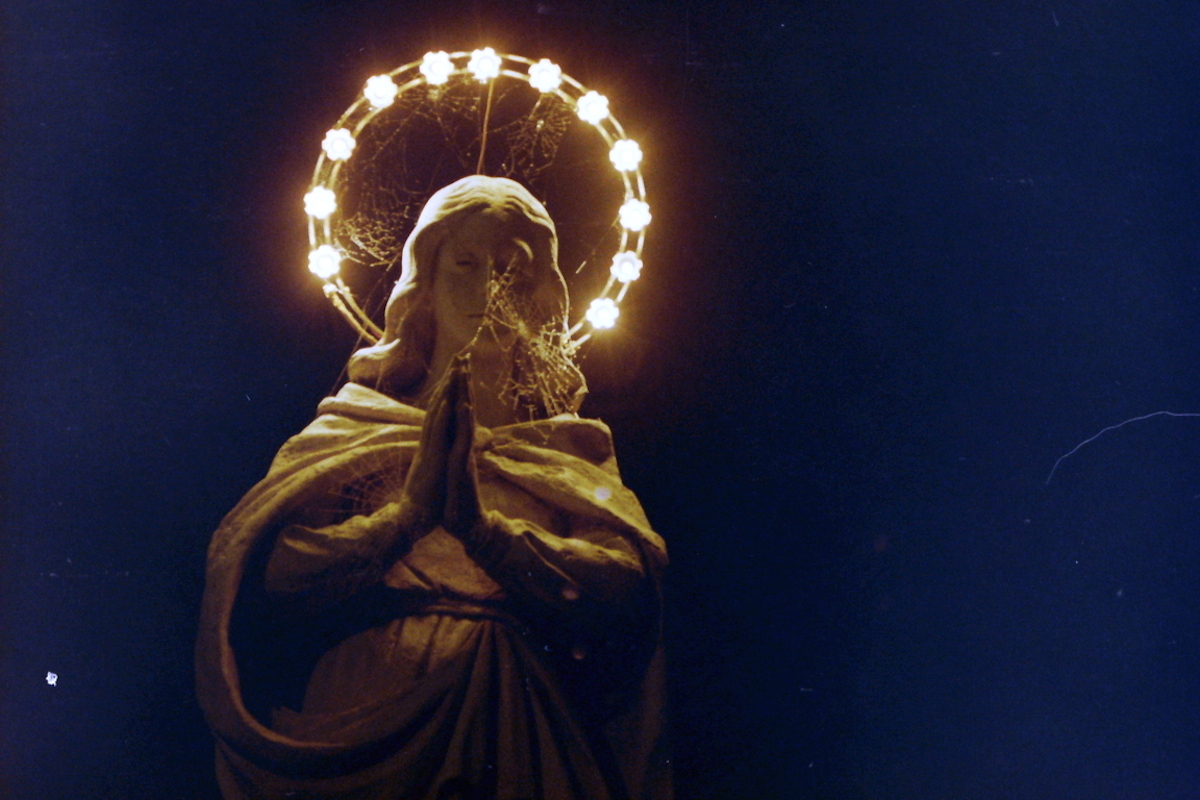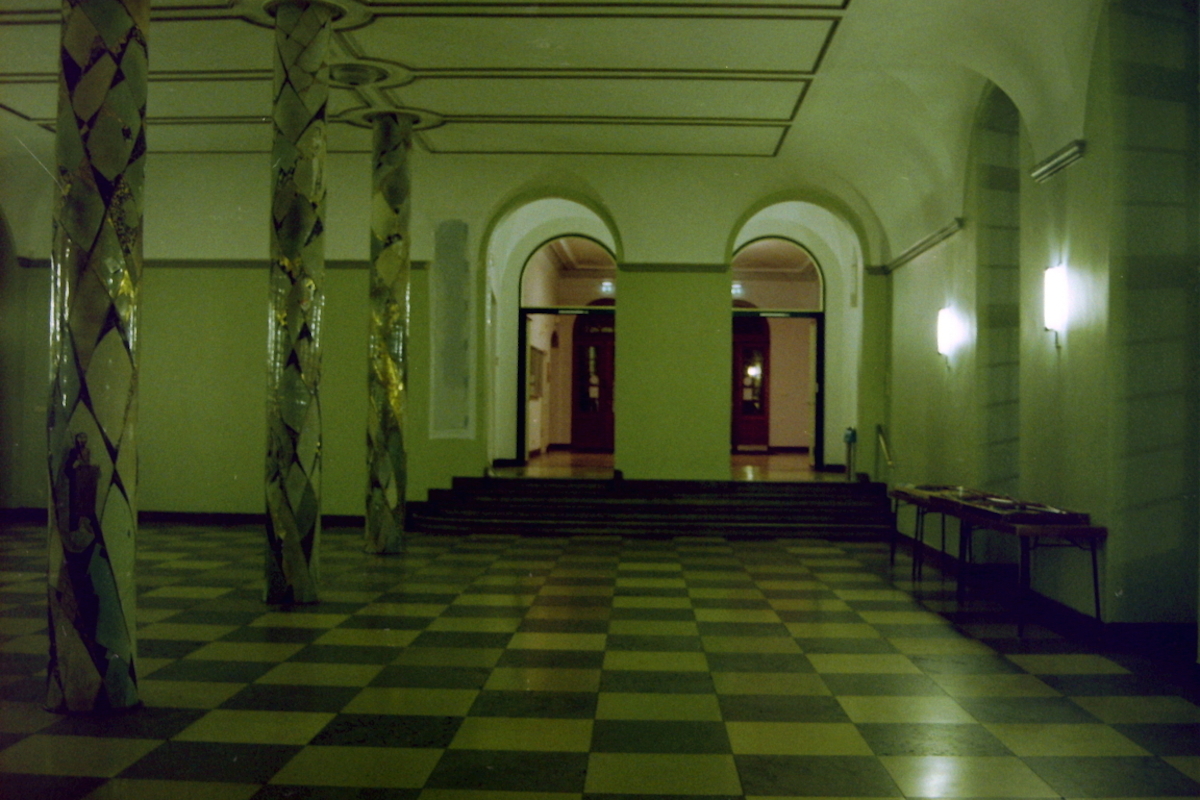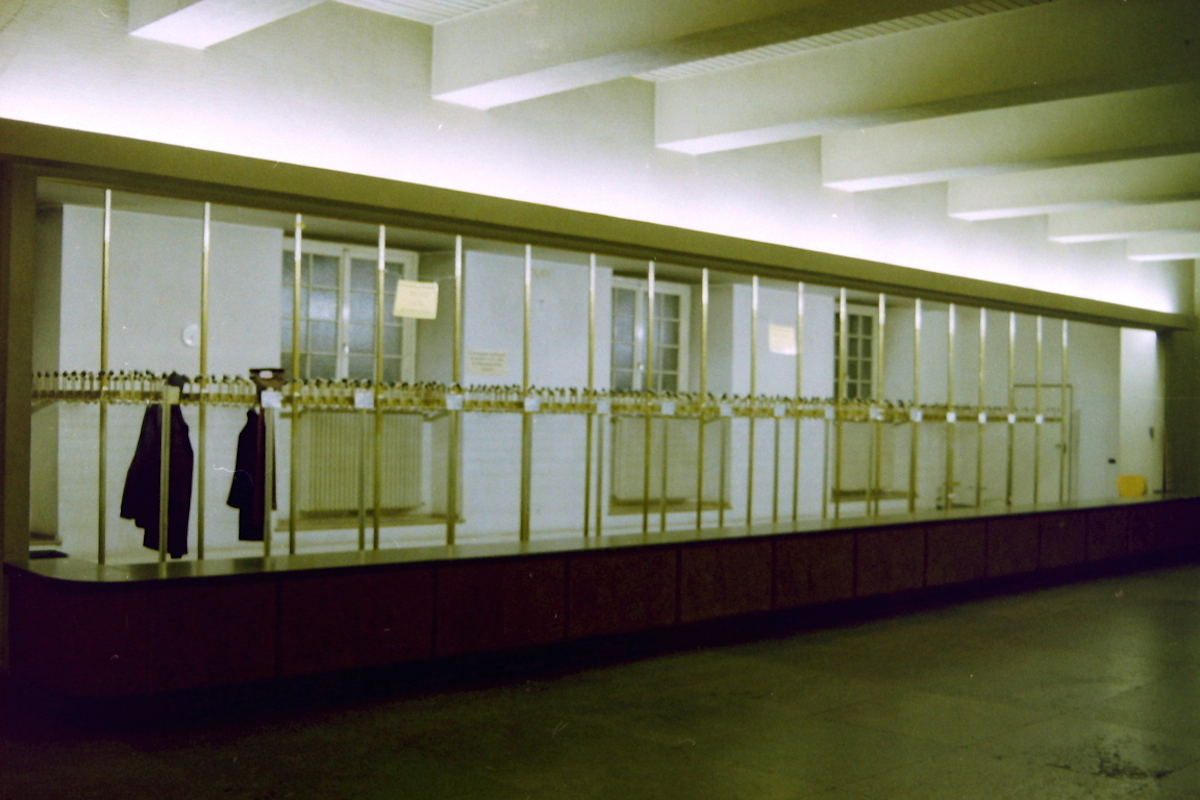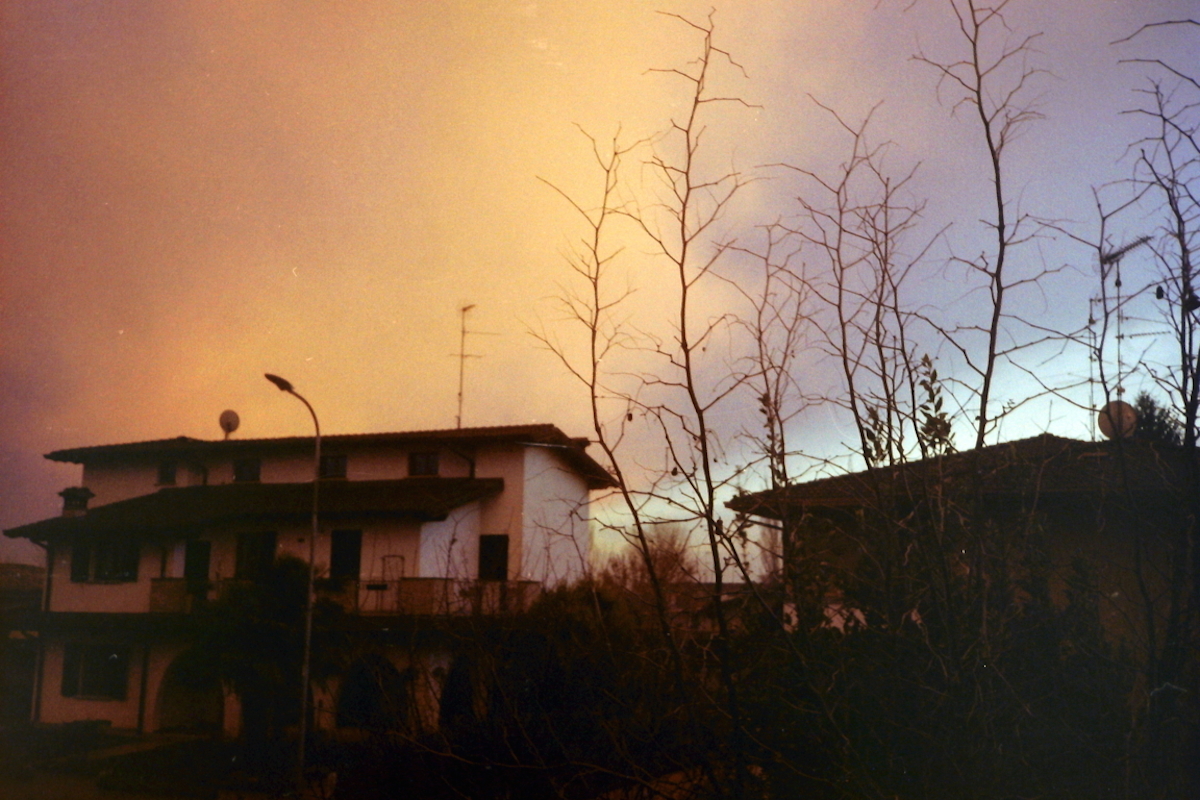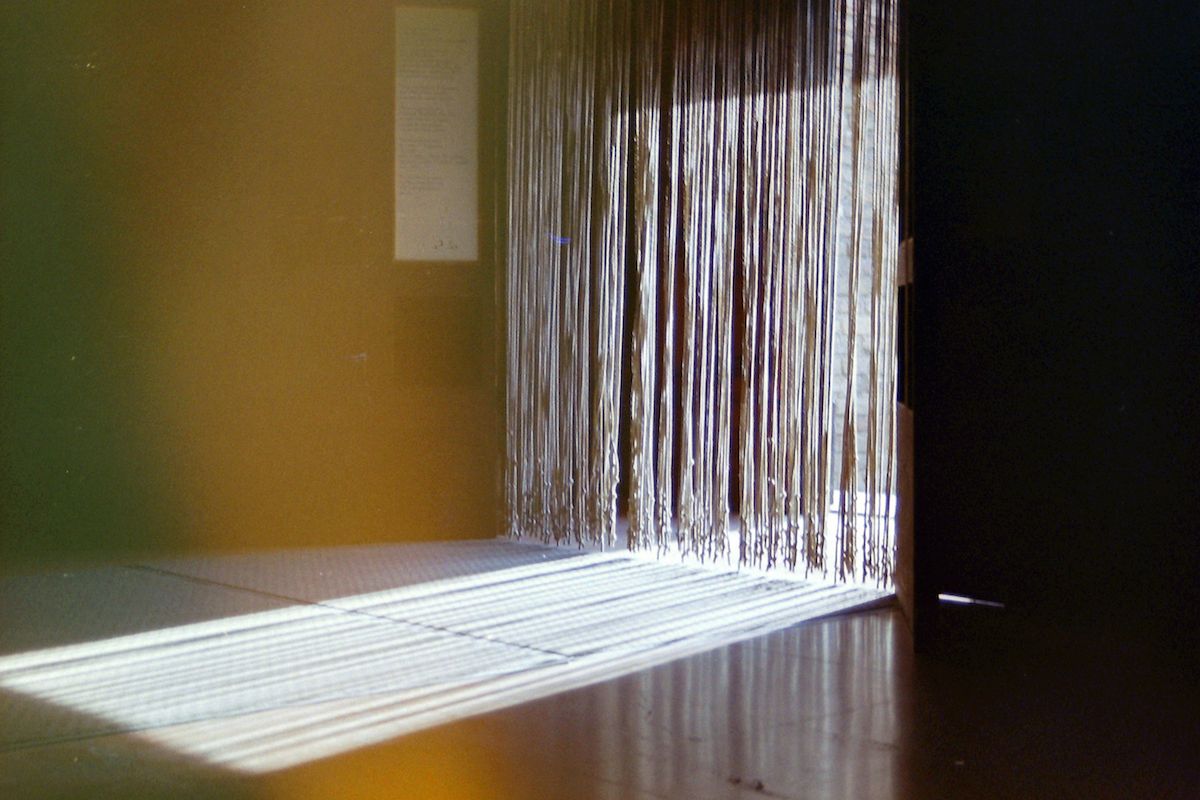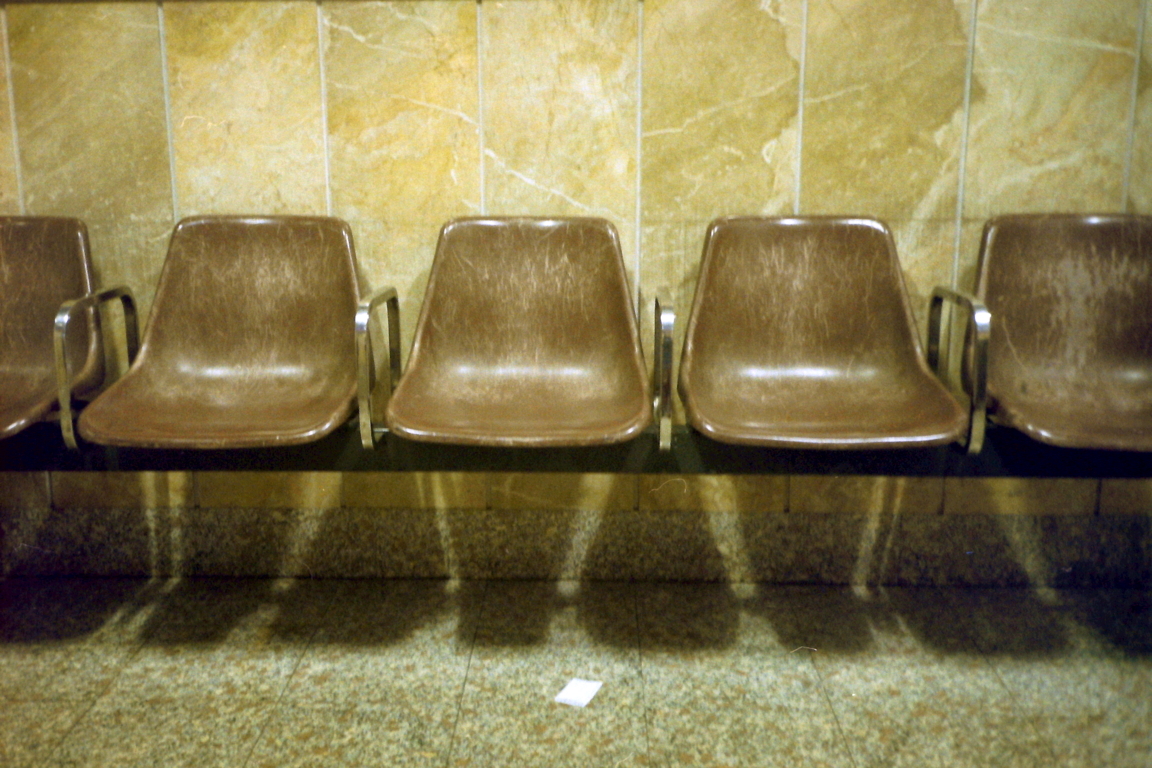Photographs by Beatrice Migliorati
How did you begin taking photographs?
I remember I was in a tiny train station waiting room in Trento, waiting for a three-hour train ride back home. I was sitting there, bored, and I saw these brown chairs – four in a row – just in front of me, with a light gray marble wall behind them. It was so simple yet so strong and evocative: probably because that setting was pretty anachronistic, I felt like I was back in the ’70s. I started photographing it with my phone but it was so disappointing, I felt the need to have more control over the creation in order to better express what I was living. I really felt like “writing things down” without using words, communicating through impressions. A couple of months later I started using a film camera and studying a lot, teaching myself. I try hard to embrace and translate into photography the feeling a place could evoke.
What is your photographic process like? Do you carry your camera with you everywhere, working spontaneously, or plan your photographs in advance?
I’m really bad at planning when it comes to photography: I usually write down some general ideas for a series but I only photograph when I feel the need. When I worked on Saturday nights I used to go out, as normal, carrying the tripod and the cameras and eventually stopping to photograph; I had some subjects I wanted to photograph, but my ideas mainly came spontaneously by looking out the car window. I always go around with at least a camera, anywhere I go, even to the supermarket or to university. I can’t help doing it in this way, I can’t predict how the light will look like so I need to be ready even when I’m out for the most banal errands.
Why do you photograph on film?
I started with film when I was about 14; my parents gave me a Lomo camera and I enjoyed it a lot. Unfortunately it broke after a while and I gave up. I tried several times with digital but it never worked out for me. I think film throws me into reality: analog photography turns a real moment into an existent object, it’s not a mere and inconsistent simulacrum, it has substance. And it made me much more patient and careful.
Who are some photographers (or other artists) who have influenced you? How have they influenced you?
Among the photographers I really admire are William Eggleston, Todd Hido and Wolfgang Tillmans, all for different reasons: Eggleston taught me that everything is worth a portrait and that there are no poor subjects, he helped me become aware of prosaic and daily scenes; Hido helped me in creating the groundwork for potential stories, starting from evocative sceneries that drag you into the space, making you feel the subject of that piece of reality. Tillmans’ work, especially the still lifes and portraits, helped me to focus on details and close-ups, to get physically and emotionally closer to the subject, leaving aside for a moment the environmental space.
I really like music as well and I mainly listen to Italian music because I often translate the songs into images automatically. I hope to work on that soon.
What are some subjects that you do not (or would not) photograph? Why is that?
I wouldn’t set any limit, I often change my mind and go back to things that initially didn’t feel right to me – I’m currently trying black-and-white film for the first time. All those opportunities actually thrill me, there’s always something new to explore, from different points of view. The only limit I have is myself. Taking photos of people, for example, is really difficult for me because I feel I can’t fake it, I need a connection with the people I portray so we need to get to know each other, I need to sit down, have a coffee and a long chat and make sure that the person I would like to photograph is comfortable with it.
Beatrice Migliorati was born in 1996 in a small village in northern Italy. She lived in Scotland for one year and she is currently living in Bologna, where she studies philosophy. Follow her work on her Instagram, Flickr, and Tumblr.
Beatrice Migliorati’s photographs will be displayed at Galetér di Nadia e Rachele from April 1st to April 22nd, and at a bookshop in Reggio Emilia, Italy, as part of the Fotografia Europea Festival from May 5th to July 15th.

